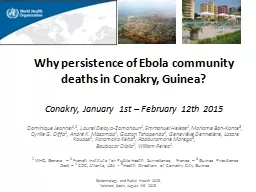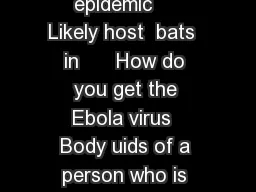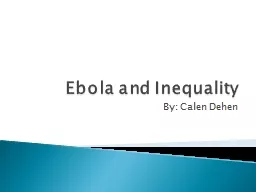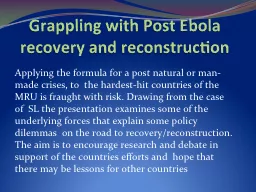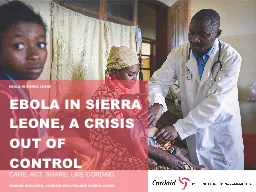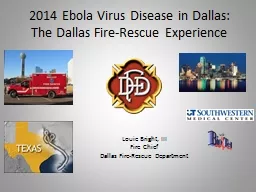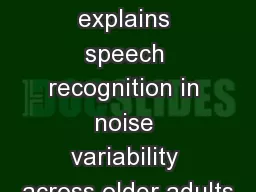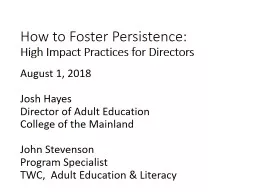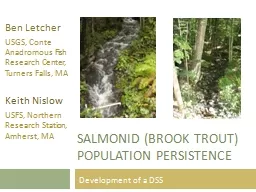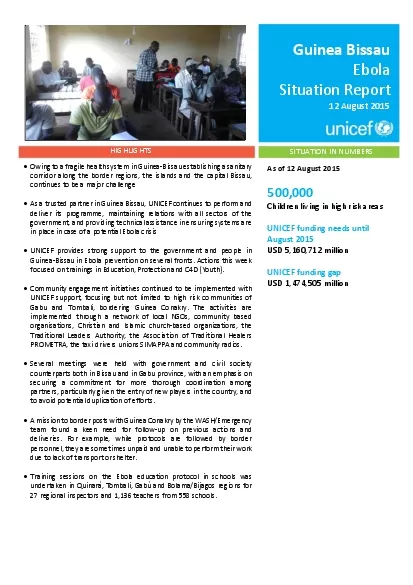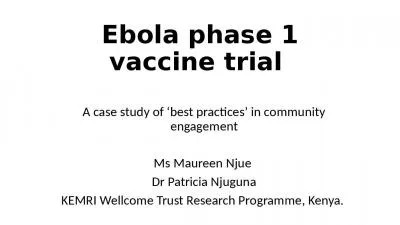PPT-Why persistence of Ebola community deaths in Conakry, Guine
Author : test | Published Date : 2016-03-06
Conakry January 1st February 12th 2015 Dominique Jeannel 12 Laurel DelayoZomahoun 1 Emmanuel Heleze 1 Mariame BahKante 3 Cyrille G Diffo 1 André K
Presentation Embed Code
Download Presentation
Download Presentation The PPT/PDF document "Why persistence of Ebola community death..." is the property of its rightful owner. Permission is granted to download and print the materials on this website for personal, non-commercial use only, and to display it on your personal computer provided you do not modify the materials and that you retain all copyright notices contained in the materials. By downloading content from our website, you accept the terms of this agreement.
Why persistence of Ebola community deaths in Conakry, Guine: Transcript
Download Rules Of Document
"Why persistence of Ebola community deaths in Conakry, Guine"The content belongs to its owner. You may download and print it for personal use, without modification, and keep all copyright notices. By downloading, you agree to these terms.
Related Documents

